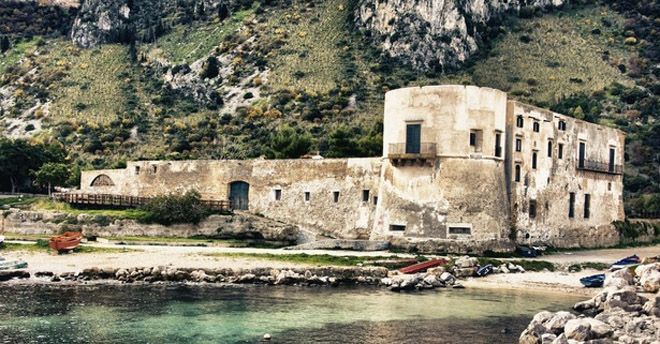Tonnara Bordonaro (Tonnara of the Virgin Mary)
The Bordonaro trap with its large marfaraggio was the generating element of the hamlet of Vergine Maria, which gradually formed all around, first with the aggregation of some fishermen's houses and subsequently with a wider development of the fishing village.
In the second half of the sixteenth century Camillo Camiliani in the manuscript Description of Sicily he refers to a tip so well-suited that it gave the opportunity to build a tower with its beam to arbitrate the trap, […]; and it is called the tonnara of Nostra Donna del Ruotolo '. It was defended by a tower built on a hill a short distance away and called "del Rotolo". In the nineteenth century Francesco Carlo D'amico, a great scholar of traps and tuna fishing, on the basis of a real concession, issued on behalf of King Alfonso (1455-1456), highlighted that the use of the Mondello traps, Vergine Maria and Arenella had been granted to the same master, Federico di Bonomia. This is to obviate the problem of respecting the minimum distance of three miles provided for by the legislation of the time, which was the cause of interminable legal disputes between the different owners. Over the centuries the owners of the trap were different: the Oneto di Sperlinga family; Ignazio Florio who introduces new methods for the capture of tuna and for its conservation (packaging in oil); the baron Chiaramonte Bordonaro, one of the most important merchants in Sicily; and in the immediate postwar period by the Caputo La Vecchia family. The complex, extensively transformed over the centuries, lost its original function in the early 50s, as was the case with the other traps located around Palermo. For a short period and during the filming of the film “Il Gattopardo”, the trap was inhabited by the director Luchino Visconti and by some of the actors belonging to the film cast. (Text source: Proloco Nostra Donna del Rotolo)
asset bound under the law 1089/1939
download decree:
| FROM n. 6210 of 25.08.1992 |
Card insertion: Ignazio Caloggero
Photo: Google
Information contributions: Ignazio Caloggero Web,
Note: The populating of the files of the Heritage database proceeds in incremental phases: cataloging, georeferencing, insertion of information and images. The cultural property in question has been cataloged, georeferenced and the first information entered. In order to enrich the information content, further contributions are welcome, if you wish you can contribute through our area "Your Contributions"



